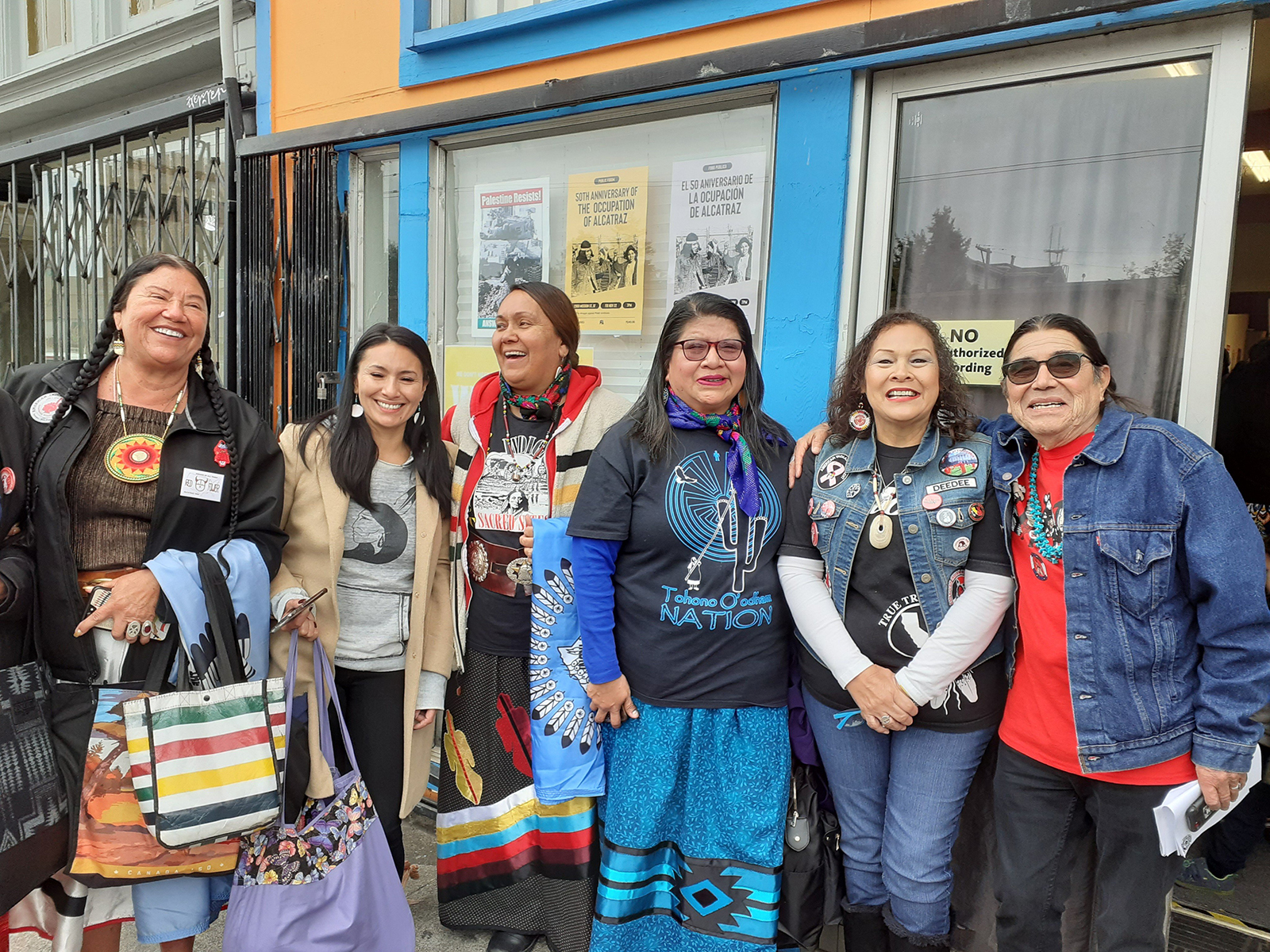 There is a controversial plan afoot to merge the Tesoro Refineries in the cities of Carson and Wilmington. This could have dire consequences for our communities. Describing this contentious matter as a “saga” is not melodramatic hyperbole. On one side, we have cold-hearted corporate barons, their minions and avaricious motives. On the other side, there are innocent bystanders, workers who could lose their jobs and calamitous dangers. Examining the main characters and context in the unfolding plot of this public health issue shows why we are standing up to Tesoro.
There is a controversial plan afoot to merge the Tesoro Refineries in the cities of Carson and Wilmington. This could have dire consequences for our communities. Describing this contentious matter as a “saga” is not melodramatic hyperbole. On one side, we have cold-hearted corporate barons, their minions and avaricious motives. On the other side, there are innocent bystanders, workers who could lose their jobs and calamitous dangers. Examining the main characters and context in the unfolding plot of this public health issue shows why we are standing up to Tesoro.
The communities: Wilmington and Carson
Smack dead in the middle of Wilmington and Carson are Tesoro’s refineries. While the refineries are technically in different cities, they are literally across the street from one another. The combined refinery facilities comprise one gigantic super-refinery that at approximately 950 acres would be the largest refinery on the West Coast. Tesoro is already the state of California’s largest refiner, controlling 27 percent of California’s refining capacity at present. There are six refineries in this area alone. The refineries in Wilmington and Carson border the city of Long Beach. Long Beach’s ports are an integral part of the refining and transportation nexus.
Wilmington, Calif. has a population of approximately 55,000 people. Over 85 percent of the population is Latino, and nearly 65 percent of households earn less than the U.S. median household income.
Carson is a larger city of roughly 93,000 residents. The areas of Carson located nearest to the refineries also consist of oppressed people with lower income levels being subjected to disproportionate amounts of environmental pollutants. According to data shared by the organization Stop Fooling California, 91 percent of the LA residents who live within a quarter mile of oil wells and refineries are people of color.
This is Native land
This entire area is historically Native Tongva territory. It is important to acknowledge the Native people whose ancestral lands we now occupy. Native American communities have been the earliest and most consistent victims of the sustained assault of systemic exploitation that characterizes development, industry, and economics in general in the United States. As we will see, Native issues including the situation in Standing Rock, N.D., which garnered so much attention this past year, have a direct connection to this refinery merger. 
These communities already suffer some of the worst air quality related health issues in the state. Despite the heavy industrial presence in the area, there are residential housing tracts close to the refinery property and there are five elementary schools and a middle school within a mile of the refinery.
At a recent grassroots meeting, a school nurse related how administrators were compelled to remodel the nurse’s office in order to be able to accommodate the huge numbers of inhalers for asthmatic students that need to be stored on site. According to the EPA’s Enforcement Compliance Database, in 2014, 5 of the 6 refineries in this vicinity were in “significant violation” of the Clean Air Act for the past three years. The residents of Wilmington have an estimated cancer risk exceeding 1,000 individuals per million. The EPA requires action when the cancer risk exceeds 1 in 1 million.
Where is the government protection?
The South Coast Air Quality Management District (SCAQMD) recently approved the merger, proving whose side they are on.
In 1976, Gov. Jerry Brown established the SCAQMD. This organization supposedly regulates and enforces compliance with federal, state and local air quality laws and guidelines. The body describes itself in the following terms:
“The SCAQMD is the air pollution control agency for all of Orange County and the urban portions of Los Angeles, Riverside and San Bernardino counties, among the smoggiest regions of the U.S. We are committed to protecting the health of residents, while remaining sensitive to businesses.”
Notice the superfluous and obsequious caveat of assurance that the interests of business would remain in mind. What a joke! It is clear the last thing on Tesoro’s mind is the well-being of Wilmington and Carson’s people!
At the American Geophysical Union’s annual meeting in the fall of 2016, a report compiled in collaboration with SCAQMD staff members acknowledged that refineries routinely underestimate pollution emission levels by as much as 12 times, causing asthma, cancer and other curable illnesses. Predictably, the SCAQMD never acted on this report.
We are all too aware that we can never count on a pro-business government to stand up for us. It is only a grassroots struggle in Carson, Wilmington, and the Harbor area that can expose and turn back corporate greed.
Non-environmental issues
The merger of the two refineries raised antitrust concerns, but the Federal Trade Commission greenlighted the merger. That is so in spite of the fact that every other merger transaction, except one, since 1997 did entail the necessity for divestitures of refineries or terminals.
While Tesoro has achieved record breaking profits in the last few years, California remains the most expensive place in the continental United States for gasoline prices. Californians pay 80 cents a gallon more than the national average. The organization Consumer Watchdog, which monitors gas prices and markets, showed how even in times of ample supply, oil refiners in Southern California set artificially high prices:
“All imports of gasoline stopped in July of 2015 because of misinformation about Exxon’s Torrance refinery coming online and that drove gas prices in LA over $4 per gallon when the rest of America was hovering in the $2 range. Chevron and Tesoro knew the state of the refinery and bought up all available supplies on the spot market, sending prices up like a rocket over night. In real time, however, there was no record of these actions. A little sunlight would have deterred these refiners from cornering the market.”
The union members in support of the refinery merger are understandably protective of their livelihoods. Environmentally sustainable solutions must also take into account the lives of the workers at Tesoro. These union members deserve training and a guaranteed path to transition into jobs in the sustainable energy sector.
Standing Rock and LA County: same enemy, same struggle
The heavy crude will originate from both the Bakken oil fields of North Dakota, and Tar Sands oil fields in Canada, and may be at various stages piped, shipped, driven and conveyed by rail to various West Coast locations eventually arriving at the Tesoro facility. The U.S. Department of Transportation has reported that Dakota crude is particularly dangerous.
The Water Protector Movement at the Standing Rock Reservation in North Dakota has long opposed the piping of this filthy crude. It is set to pass under the Missouri River and Lake Oahe reservoir, the sources of the tribe’s drinking water. This poses devastating risks for the Lakota and Dakota people of Standing Rock, to say nothing of all the populations downstream.
We must consider the relation between the crude that supplies the Tesoro refinery and issues where the crude originates. Tar Sands crude is strip mined and creates an uninhabitable and poisoned landscape with toxic lakes and rivers. As in the case of the Bakken fields and the Dakota Access Pipeline, the cultural heritage, land, ecosystems and human health of First Nation communities are summarily dismissed for the sake of profit. Native-led resistance movements continue to stand up in defiance of the quest for profit at the expense of all life.
In California and across the U.S., renewable energy is a life and death matter. Tesoro is playing with our lives and our land. Organizing efforts seek to unite the refinery workers with the residents of the area. We are all on the same side.
Tesoro: the well-being of the people and planet are more important than your bottom line! Tesoro says get back, we say fight back!






